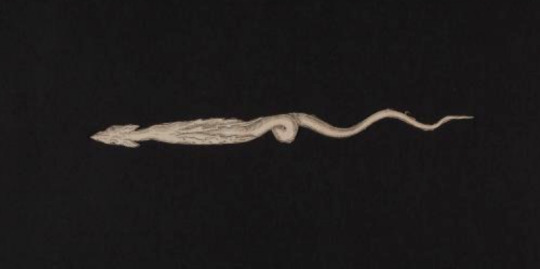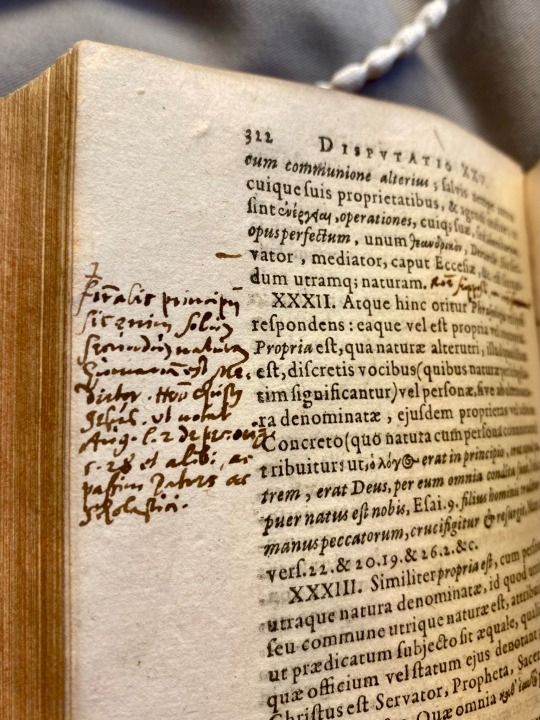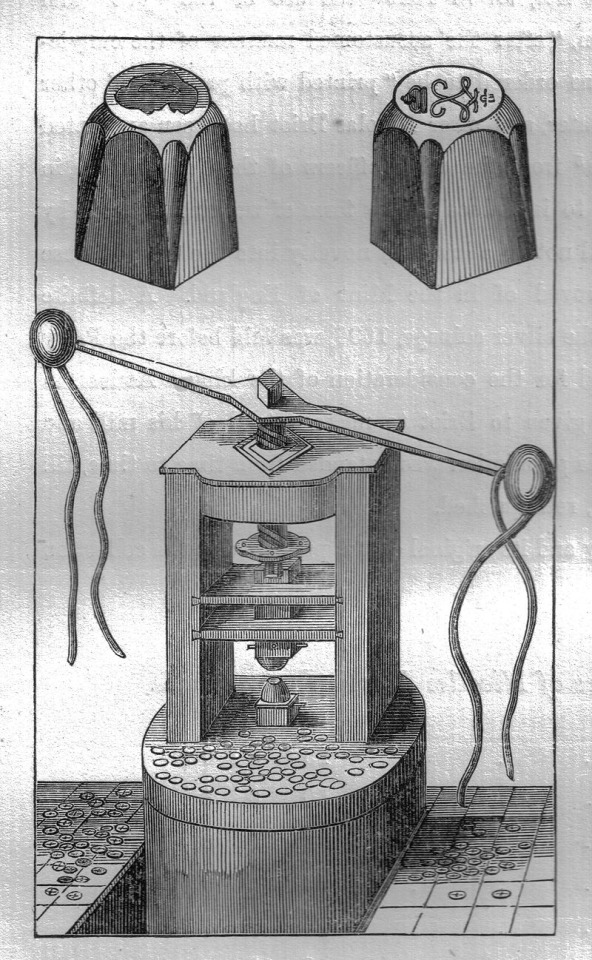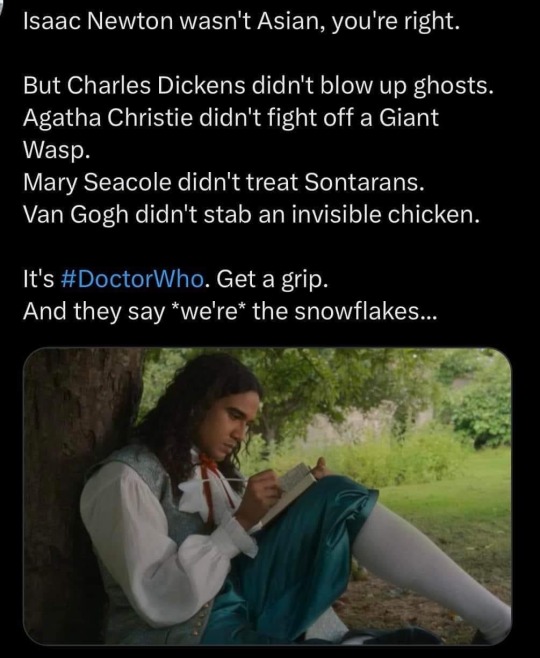#early modern history
Explore tagged Tumblr posts
Text
So, just wanted to share that early modern pop-up astronomy books were a thing and they are absolutely glorious.


Here's a close-up of the little dragon-serpent guy, because he is especially magnificent.
#astronomy#early modern history#early modern period#dragon#astronomy book#pop up books#history of science#Leonhard Thurnheisser zum Thurn#astrolabium
3K notes
·
View notes
Text
Pentiment's Complete Bibliography, with links to some hard-to-find items:
I've seen some people post screenshots of the game's bibliography, but I hadn't found a plain text version (which would be much easier to work from), so I put together a complete typed version - citation style irregularities included lol. I checked through the full list and found that only four of the forty sources can't be found easily through a search engine. One has no English translation and I'm not even close to fluent enough in German to be able to actually translate an academic article, so I can't help there. For the other three (a museum exhibit book, a master's thesis, and portions of a primary source that has not been entirely translated into English), I tracked down links to them, which are included with their entries on the list.
If you want to read one of the journal articles but can't access it due to paywalls, try out 12ft.io or the unpaywall browser extension (works on Firefox and most chromium browsers). If there's something you have interest in reading but can't track down, let me know, and I can try to help! I'm pretty good at finding things lmao
Okay, happy reading, love you bye
Beach, Alison I. Women as Scribes: Book Production and Monastic Reform in Twelfth-Century Bavaria. Cambridge Univeristy Press, 2004.
Berger, Jutta Maria. Die Geschichterder Gastfreundschaft im hochmittel alterlichen Monchtum: die Cistercienser. Akademie Verlag GmbH, 1999. [No translation found.]
Blickle, Peter. The Revolution of 1525. Translated by Thomas A. Brady, Jr. and H.C. Erik Midelfort. The Johns Hopkins University Press, 1985.
Brady, Thomas A., Jr. “Imperial Destinies: A New Biography of the Emperor Maximilian I.” The Journal of Modern History, vol 62, no. 2., 1990. pp.298-314.
Brandl, Rainer. “Art or Craft: Art and the Artist in Medieval Nuremberg.” Gothic and Renaissance Art in Nuremberg 1300-1550. The Metropolitan Museum of Art, 1986. [LINK]
Byars, Jana L., “Prostitutes and Prostitution in Late Medieval Bercelona.” Masters Theses. Western Michigan University, 1997. [LINK]
Cashion, Debra Taylor. “The Art of Nikolaus Glockendon: Imitation and Originality in the Art of Renaissance Germany.” Journal of Historians of Netherlandish Art, vol 2, no. 1-2, 2010.
de Hamel, Christopher. A History of Illuminated Manuscripts. Phaidon Press Limited, 1986.
Eco, Umberto. The Name of the Rose. Translated by William Weaver. Mariner Books, 2014.
Eco, Umberto. Baudolino. Translated by William Weaver. Mariner Books, 2003.
Fournier, Jacques. “The Inquisition Records of Jacques Fournier.” Translated by Nancy P. Stork. Jan Jose Univeristy, 2020. [LINK]
Geary, Patrick. “Humiliation of Saints.” In Saints and their cults: studies in religious sociology, folklore, and history. Edited by Stephen Wilson. Cambridge University Press, 1985. pp. 123-140
Harrington, Joel F. The Faithrul Executioner: Life and Death, Honor and Shame in the Turbulent Sixteenth Century. Farrar, Straus and Giroux, 2013.
Hertzka, Gottfired and Wighard Strehlow. Grosse Hildegard-Apotheke. Christiana-Verlag, 2017.
Hildegard von Bingen. Physica. Edited by Reiner Hildebrandt and Thomas Gloning. De Gruyter, 2010.
Julian of Norwich. Revelations of Divine Love. Translated by Barry Windeatt. Oxford Univeristy Press, 2015.
Karras, Ruth Mazo. Sexuality in Medieval Europe: Doing Unto Others. Routledge, 2017.
Kerr, Julie. Monastic Hospitality: The Benedictines in England, c.1070-c.1250. Boudell Press, 2007.
Kieckhefer, Richard. Forbidden rites: a necromancer’s manual of the fifteenth century. Sutton, 1997.
Kuemin, Beat and B. Ann Tlusty, The World of the Tavern: Public Houses in Early Modern Europe. Routledge, 2017.
Ilner, Thomas, et al. The Economy of Duerrnberg-Bei-Hallein: An Iron Age Salt-mining Center in the Austrian Alps. The Antiquaries Journal, vol 83, 2003. pp. 123-194
Lang, Benedek. Unlocked Books: Manuscripts of Learned Magic in the Medieval Libraries of Central Europe. The Pennsylvania State University Press, 2008
Lindeman, Mary. Medicine and Society in Early Modern Europe. Cambridge University Press, 2019.
Lowe, Kate. “’Representing’ Africa: Ambassadors and Princes from Christian Africa to Renaissance Italy and Portugal, 1402-1608.” Transactions of the Royal Historical Society Sixth Series, vol 17, 2007. pp. 101-128
Meyers, David. “Ritual, Confession, and Religion in Sixteenth-Century Germany.” Archiv fuer Reformationsgenshichte, vol. 89, 1998. pp. 125-143.
Murat, Zuleika. “Wall paintings through the ages: the medieval period (Italy, twelfth to fifteenth century).” Archaeological and Anthropological Sciences, vol 23, no. 191. Springer, October 2021. pp. 1-27.
Overty, Joanne Filippone. “The Cost of Doing Scribal Business: Prices of Manuscript Books in England, 1300-1483.” Book History 11, 2008. pp. 1-32.
Page, Sophie. Magic in the Cloister: Pious Motives, Illicit Interests, and Occullt Approaches to the Medieval Universe. The Pennsylvania State University Press, 2013.
Park, Katharine. “The Criminal and the Saintly Body: Autopsy and Dissectionin Renaissance Italy.” Renaissance Quarterly, vol 47, no. 1, Spring 1994. pp. 1-33.
Rebel, Hermann. Peasant Classes: The Bureaucratization of Property and Family Relations under Early Habsburg Absolutism, 1511-1636. Princeton University Press, 1983.
Rublack, Ulinka. “Pregnancy, Childbirth, and the Female Body in Early Modern Germany.” Past & Present,vol. 150, no. 1, February 1996.
Salvador, Matteo. “The Ethiopian Age of Exploration: Prester John’s Discovery of Europe, 1306-1458.” Journal of World History, vol. 21, no. 4, 2011. pp.593-627.
Sangster, Alan. “The Earliest Known Treatise on Double Entry Bookkeeping by Marino de Raphaeli.” The Accounting Historians Journal, vol. 42, no. 2, 2015. pp. 1-33.
Throop, Priscilla. Hildegarde von Bingen’s Physica: The Complete English Translation of Her Classic Work on Health and Healing. Healing Arts Press, 1998.
Usher, Abbott Payson. “The Origins of Banking: The Brimitive Bank of Deposit, 1200-1600.” The Economic History Review, vol. 4, no. 4. 1934. pp.399-428.
Waldman, Louis A. “Commissioning Art in Florence for Matthias Corvinus: The Painter and Agent Alexander Formoser and his Sons, Jacopo and Raffaello del Tedesco.” Italy and Hungary: Humanism and Art in the Early Renaissance. Edited by Peter Farbaky and Louis A. Waldman, Villa I Tatti, 2011. pp.427-501.
Wendt, Ulrich. Kultur and Jagd: ein Birschgang durch die Geschichte. G. Reimer, 1907.
Whelan, Mark. “Taxes, Wagenburgs and a Nightingale: The Imperial Abbey of Ellwangen and the Hussite Wars, 1427-1435.” The Journal of Ecclesiastical History, vol. 72, no. 4, 2021, pp.751-777.
Wiesner-Hanks, Merry E. Women and Gender in Early Modern Europe. Cambridge University Press, 2008.
Yardeni, Ada. The Book of Hebrew Script: History, Palaeography, Script Styles, Calligraphy & Design. Tyndale House Publishers, 2010.
548 notes
·
View notes
Text

Ritual vessel with naga. Indonesia. 14th to 15th Century CE.
The Smithsonian National Museum of Asian Art.
#the Smithsonian#Indonesia#Indonesian#indonesian history#asian history#early modern period#early modern history#art#culture#history#dragon
113 notes
·
View notes
Text


in small forgotten things // notes from a book i studied for my class on the history of printing
#studyblr#study blog#study aesthetic#early modern history#early modern period#early modernism#seventeenth century#light academia#light academic aesthetic#dark academia#romantic academia#academia#academia aesthetic#marginalia
235 notes
·
View notes
Text
Somewhere in the world a historian has a panic attack whenever someone calls a “codex” a freaking “19th century journal”.
Not to scorn your ignorance of what a “codex” is, but come on, folks, how on earth does anyone think the “Solomonari codex of secrets” is Herr Knock’s journal or diary or whatever? Look at the size of this thing! Even Professor Von Franz is here looking “damn, this is heavy!”


No one has a “diary” or a “journal” this huge, in no time period ever. You don’t need to be a historian or a history buff to see this book is ancient, medieval looking, and it clearly doesn’t belong to Knock.


Hand written, in Latin with illumination? Glorious early Modern era codex. The attention to detail in this film is amazing.
Professor Von Franz identifies it as Solomonari, and Orlok is the Solomonari of the narrative. I don’t really know what more confirmation you people need in the film to understand this codex is Orlok’s, and this scene is “just uncovered Orlok’s masterplan”.

Especially when we saw books like this in Orlok’s cabinet. Early modern historians probably had an orgasm seeing this magnificent Renaissance study room. I know that tapestry on Orlok’s castle wall made grin on my seat.
#Nosferatu 2024#Nosferatu#count Orlok 2024#count Orlok#solomonari#Solomonari codex of secrets#early modern history#professor Von Franz
49 notes
·
View notes
Text

Goetz von Berlichingen Being Dressed in Armor by His Page George (1826–27)
Eugène Delacroix (French, 1798-1863)
35 notes
·
View notes
Text

#medieval#history#reformation#counter reformation#books#new books#women's history#early modern history
29 notes
·
View notes
Text
Nyabinghi, or Nyabingi, was a legendary woman of the Bahororo Bantu tribe whose name meant "mother of abundance." She likely lived in the latter half of the 18th century. Following her death, Nyabinghi was mythologized as a spirit who moved among women in Ndorwa (Rwanda and Uganda), possessing them and leading them to rebel against illegitimate authorities, both from within and without.

(Illustration representing Queen Kitami, one of the women possessed by Nyabinghi)
21 notes
·
View notes
Text
Mariana of Austria's Cancer
On May 16, 1696, the widowed Queen Mariana of Austria died in Madrid from breast cancer. This painful disease has existed for centuries, and the chronicles written by doctors are invaluable in finding out which women suffered from it and how it developed. Unfortunately, science was still unable to provide relief and a cure, but in some cases, we can know the diagnosis and the evolution. The doctor who treated her certified Her Majesty's illness as follows: “Six days ago, our Most High Queen showed us a tumor that she has in her left breast (and that she had hidden for a long time) of the magnitude and size of a newborn's head. Although it is not between the ribs, it has its root in them, and it advances, and advances towards the exterior, showing on its surface five or six growths hard as stones.
The whole surface of the tumor is hard and purple, and it causes pains that sometimes reach the ribs and prevent Her Majesty from sleeping at night. Veins swollen with bilious blood and purple spots like those produced by trauma can be observed in the tumor. Its shape is irregular and horrible to look at, from all of which it can be deduced that it is a cancer of the kind spoken of by Galen, and which Cornelius Celsus calls “carcinoma.” It has not yet spread, but its color and the pain it causes make it feared that it will spread soon. An attempt is being made to cure it by the preservative and palliative method, with the consent of the Venerable Royal College of Physicians and Surgeons, and efforts are being made to prevent the tumor from growing by using attenuating and evacuating medicines, that is, by eliminating the fibrous humors and trying to reduce them. May God, Optimus, Maximus, restore Her Majesty's health and prolong her life for many years. Madrid, April 5, 1696.”
They tried to cure Doña Mariana by resorting to supernatural remedies, transporting the body of San Isidro and the Virgin of Atocha, to the Royal Alcazar, to whom the royal family was very devoted. The tumor opened up and reached a more than considerable size (the head of a seven-year-old child). The queen died on May 16, 1696 and was buried in the royal pantheon of San Lorenzo de El Escorial.
Source
#history#mariana de austria#house of habsburg#17th century#habsburg#spain#cancer#breast cancer#women in history#european history#early modern history#1600s#baroque period#baroque#tw cancer#I cried while reading#this is so sad :(
24 notes
·
View notes
Text

Reynolds insightfully picks her way through the tumultuous advent of Reformation, the spread of printing, burgeoning lay literacy, and expanding markets to tell a complex story about the often-counterintuitive interplay between words and experience, natural and divine, manuscripts and print, and new and old knowledge in early modern England.
#uwlibraries#history books#british history#history of science#history of publishing#early modern history
30 notes
·
View notes
Note
Say you were the Master of Coin that Robert first appointed after the rebellion. Your first major task is introducing milled coins to the realm. What's your best strategy to do so?
The basic strategy is to invest in the underlying Early Modern technology, and then combine that with the traditional legal/public process of "renovatio monetae" to get the word about the need to replace old money with new money.

Everything else is enforcement - you need royal justices to declare that old money will not be accepted as payment for taxes and fees, legal settlements, court judgements, and valid payments for contracts, and preferably combine that with some high-profile criminal cases against forgers and counterfeiters to hook the medieval true crime enthusiasts.
55 notes
·
View notes
Text



the previously posted sketch of a 17th outfit has been created
#medieval#reenactment#larp#character art#character design#17th century#early modern history#historical costuming#historical fashion#history#sewing#costume design#costuming
23 notes
·
View notes
Text

Composite album folio, Dancing sufis; Cluster of primrose, calligraphic panels. Artist, Master Murad. Calligrapher, Shah Mahmud al-Nishapuri. Iranian, Safavid Period. 1575 CE.
The Smithsonian National Museum of Asian Art.
#iranian#Iran#safavid#early modern period#early modern history#asian history#iranian history#1500s#art#culture#history#middle eastern history
112 notes
·
View notes
Text
“The day of her execution became Mary’s most successful piece of self-presentation. The tawny petticoat she wore — the color of Catholic martyrdom — showed Mary’s chosen role for posterity. Though she left behind far less striking a body of contemporary portraits than did Elizabeth, the history painters of the eighteenth and nineteenth centuries delighted in her tragedy. For as such it was almost universally seen: as the Venetian ambassador in France, Michele Surian predicted in 1569, when the English finally killed Mary, ‘her life, which till now has been compounded of comedy and tragi-comedy, would terminate at length in pure tragedy.’”
sarah gristwood, "the queen as artist: elizabeth tudor and mary stuart."
#mary stuart#mary queen of scots#mqos#elizabeth i#history#women's history#royal history#english history#early modern history#*quotes
41 notes
·
View notes
Text

the true burial place of Lady Grange
10 notes
·
View notes
Text

Letting kids see a different, discursive take on history is really cool and really important.
It’s why I think there is still a genuinely radical element to Hamilton despite all its issues with lionising the Founding Fathers - because it’s asking people to imagine a history where this was possible.
Not to mention, tbh, this is actually kind of an incredible nod to the debt that European Enlightenment-era science owed to the scientific tradition in Asia and the Middle East, which Eurocentric history has been ignoring for centuries.
If a British kid sees this and digs into Newton’s life, they might well be disappointed to find out that he was actually white, but hopefully they’ll then find out about Ibn al-Haytham (known in Europe as Alhazen) and see the enormous debt Newton’s work owes to his.
#early modern history#medieval history#doctor who#isaac newton#optics#ibn al-haytham#gravity#alexander hamilton
187 notes
·
View notes